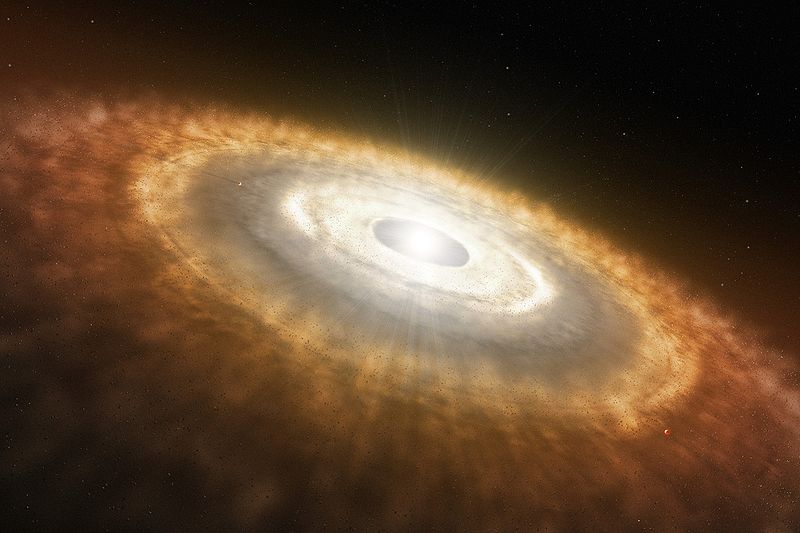 For as long as people have been looking at the night sky, they have been wondering where our Earth came from, and by what processes it formed. A paper published in Science this week by Neenka van der Marrell at the Leiden Observatory presents new evidence that our models of how planets form are not quite right.
For as long as people have been looking at the night sky, they have been wondering where our Earth came from, and by what processes it formed. A paper published in Science this week by Neenka van der Marrell at the Leiden Observatory presents new evidence that our models of how planets form are not quite right.
Theorists believe that the Sun and planets of the solar system formed when an interstellar gas cloud collapsed inwards due to its own gravitational self-attraction, around five billion years ago. The central parts of that gas cloud became the Sun, while there would have been material around that which was less tightly bound, but still in orbit around the Sun.
Over time this material - taking the form of a swirling disk called a protoplanetary disk - began to collect together into conglomerates which became planets.
Quite how this process of conglomeration occurred is less well understood. Some people have suggested that small solid particles of interplanetary material collide together within the disk and stick together.
This material certainly exists - it's called dust, and is essentially the soot which is formed in the atmospheres of previous generations of stars. The problem with the model is that on Earth, experiments invariably show that when lumps of solid material collide at high speed they tend to shatter rather than sticking together.
Moreover, as planets begin to form around stars, they would feel friction from the material around them, which will tend to cause them to slow down and spiral inwards towards their host stars quite quickly.
To get around these problems, some theorists have proposed that instead of forming out of high-speed collisions between solid particles, planets found out of swarms of dust grains which become bound together by the force of gravity before they physically cohere together.
The argument, however, has been difficult to prove without observations of planets in the process of forming, and until now no telescope has had the high resolution that would be needed to image planets forming around even the Sun's nearest neightbour stars.
In the past few months, however, the Atacama Large Millimetre Array (ALMA) has been approaching completion, and using 64 antennas spread across the Chilean Andes this is able to see planet-forming disks in much more detail than has previously been possible.
Although the telescope is not yet completed, it is already making its first scientific observations, and writing in Science this week, Neenka van der Marrell reports observations made of the planet-forming disk around the star Oph IRS 48. The observations are remarkable in that the dust around the star appears to be concentrated to one side, appearing very much like a swarm of material in orbit around the central star.
This is only one observation of one protoplanetary disk, but it shows the kind of images that we can expect from ALMA in coming years, and lends strong support to the idea that swarms of material can be present in planet-forming disks.
- Previous Skimming through the Sun's atmosphere
- Next What's in a name?










Comments
Add a comment